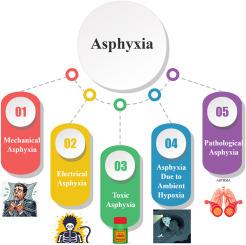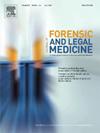Fatal mechanical asphyxia: a comprehensive forensic review with an illustrative case
IF 1.2
4区 医学
Q3 MEDICINE, LEGAL
引用次数: 0
Abstract
Fatal asphyxia is one of the most diagnostically complex categories of sudden death because its macroscopic signs are often subtle, heterogeneous and easily confounded with post-mortem artefacts. We reviewed 38 English-language publications (2000–2025) that contained autopsy-confirmed asphyxial fatalities and re-coded every case into a five-group typology—mechanical, electrical, toxic (chemical), ambient-hypoxia and pathological (endogenous). Recurrent external findings, internal soft-tissue lesions and ancillary toxicological or histochemical markers were extracted, and the literature trends were anchored to day-to-day practice by a single illustrative non-homicidal thoracocervical-compression case from our regional medicolegal institute. Within the pooled dataset, neck compression accounted for 55 % of mechanical fatalities, yet petechial haemorrhages were absent in 38 % of those victims, and potential toxicological co-factors (ethanol, opioids or sedatives) were documented in almost one-third of all cases. These discrepancies expose blind spots in death-scene reconstruction and in the routine dissection of deep cervical tissues. Accordingly, we propose a pragmatic classification framework that forces explicit consideration of scene context, mandates layer-by-layer dissection of the neck and anterior thorax, and incorporates targeted toxicology to resolve ambiguous mechanisms. By integrating narrative evidence with real-world autopsy experience, the review delineates where current diagnostic protocols succeed and where they fail, providing forensic pathologists with a clearer decision pathway when evaluating suspected asphyxial deaths.

致命的机械窒息:综合法医审查与一个说明性的案例。
致死性窒息是诊断上最复杂的猝死类型之一,因为其宏观体征往往是微妙的,异质性的,很容易与死后的假象相混淆。我们回顾了38篇英文出版物(2000-2025年),其中包含尸检证实的窒息死亡病例,并将每个病例重新编码为五组类型-机械,电气,有毒(化学),环境缺氧和病理性(内源性)。我们提取了反复出现的外部表现、内部软组织病变和辅助的毒理学或组织化学标记物,并通过我们地区医学研究所的一个具有说明意义的非杀人性胸颈压迫病例,将文献趋势固定在日常实践中。在合并的数据集中,颈部压迫占机械死亡人数的55%,但38%的受害者没有点状出血,几乎三分之一的病例记录了潜在的毒理学辅助因素(乙醇、阿片类药物或镇静剂)。这些差异暴露了死亡现场重建和常规宫颈深部组织解剖的盲点。因此,我们提出了一个实用的分类框架,强制明确考虑场景背景,要求逐层解剖颈部和前胸,并结合目标毒理学来解决不明确的机制。通过将叙事证据与真实尸检经验相结合,该综述描述了当前诊断方案的成功和失败之处,为法医病理学家在评估疑似窒息死亡时提供了更清晰的决策途径。
本文章由计算机程序翻译,如有差异,请以英文原文为准。
求助全文
约1分钟内获得全文
求助全文
来源期刊

Journal of forensic and legal medicine
MEDICINE, LEGAL-
CiteScore
2.70
自引率
6.70%
发文量
106
审稿时长
57 days
期刊介绍:
The Journal of Forensic and Legal Medicine publishes topical articles on aspects of forensic and legal medicine. Specifically the Journal supports research that explores the medical principles of care and forensic assessment of individuals, whether adult or child, in contact with the judicial system. It is a fully peer-review hybrid journal with a broad international perspective.
The Journal accepts submissions of original research, review articles, and pertinent case studies, editorials, and commentaries in relevant areas of Forensic and Legal Medicine, Context of Practice, and Education and Training.
The Journal adheres to strict publication ethical guidelines, and actively supports a culture of inclusive and representative publication.
 求助内容:
求助内容: 应助结果提醒方式:
应助结果提醒方式:


